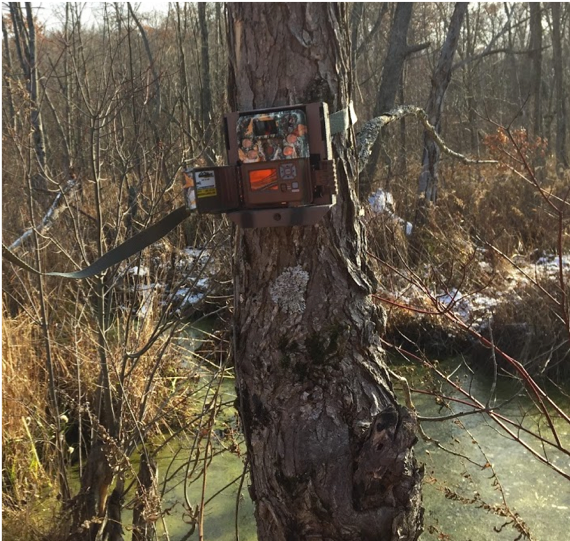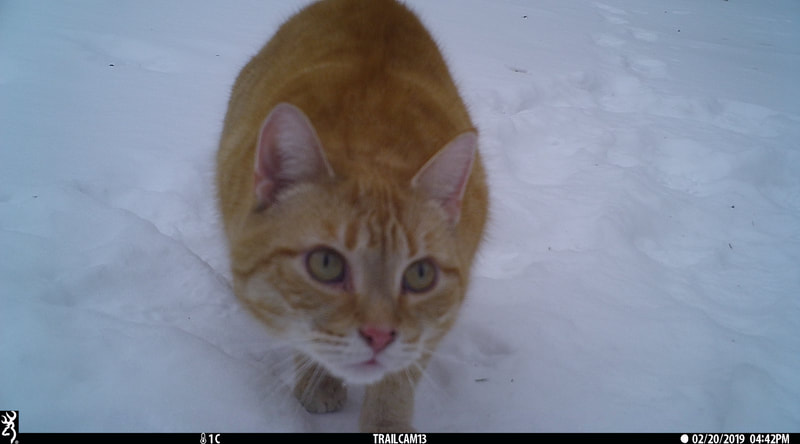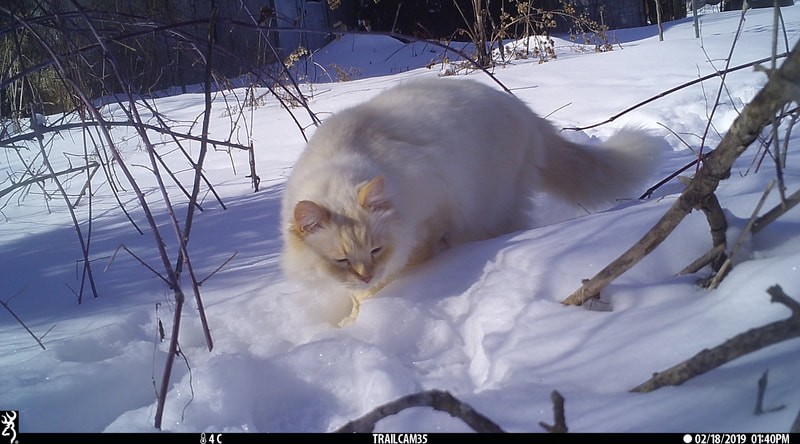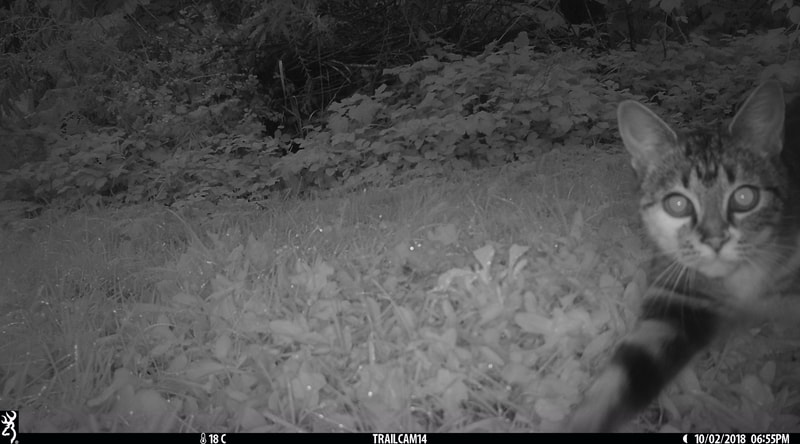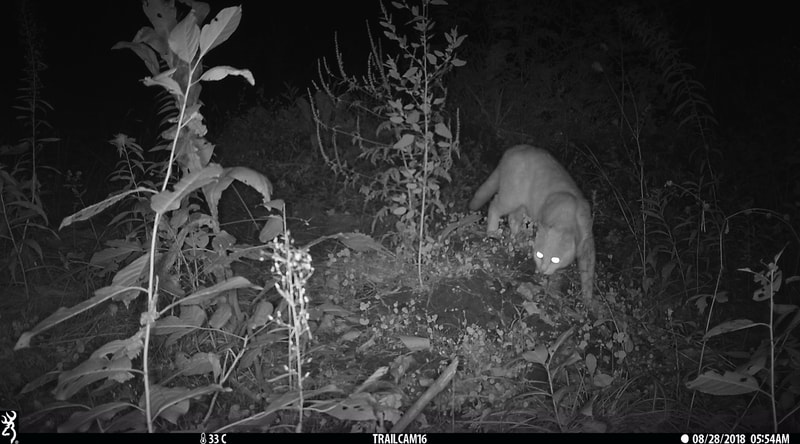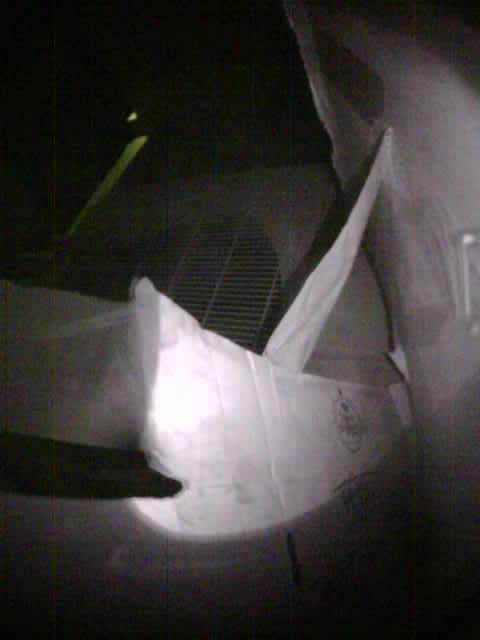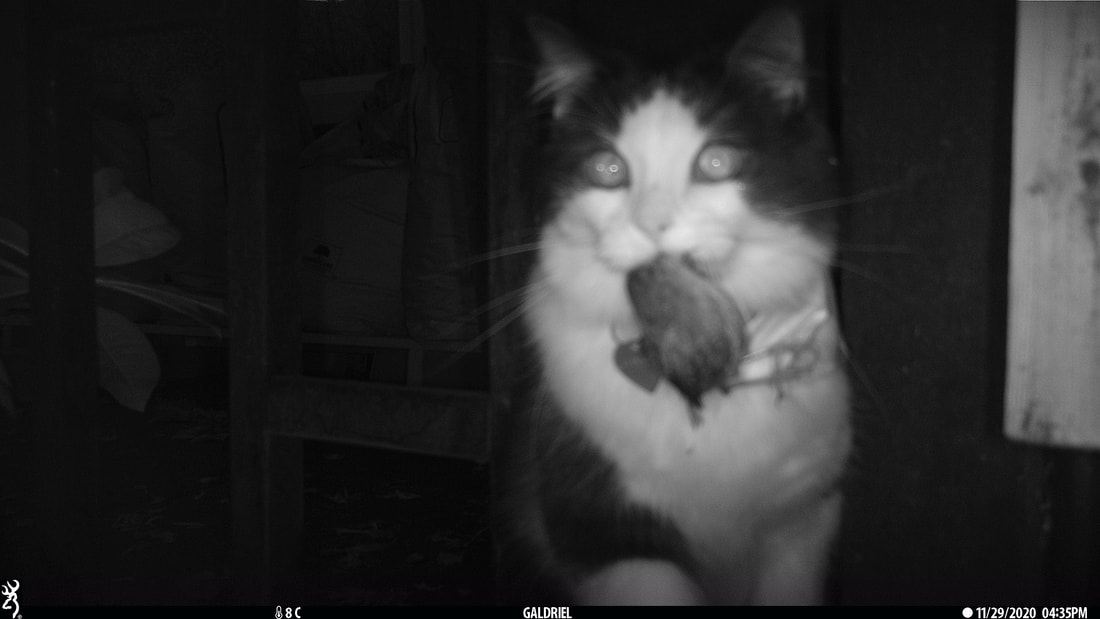Improving the lives of domestic cats and understanding their effects on the environment
What do domestic cats do when nobody is looking?
I am using an innovative specially designed camera, called a Catcam, to get a cat’s eye-view of the world. Why? Because who does not want to see what a cat is looking at, and cats are amazing creatures that we need to better understand. Read below to find out more.
What is a Catcam?
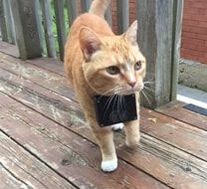
Catcams are small custom built cameras that sit under the chin of a cat. They have a special device inside them called an accelerometer. This accelerometer detects when a cat begins to move and it turns the camera on. Cats spend most of their days sleeping or lying around and because we don’t want to watch a cat sleeping for hours upon hours, having the camera turn on only when the cat is moving, allows us to get the footage we want and helps us preserve battery life.
Catcams take a sequence of photos when the cat is moving then turn off when the cat stops moving. Then using a computer program take those rapid images and turn them into videos so we can then see what the cat sees at approximately the same time intervals as the cat.
Catcams take a sequence of photos when the cat is moving then turn off when the cat stops moving. Then using a computer program take those rapid images and turn them into videos so we can then see what the cat sees at approximately the same time intervals as the cat.
Why study domestic cats?
Cats are complex interesting animals and a popular household pet. There is currently a debate about whether cats should be allowed to roam-freely outside. Some people feel their cats benefit from being allowed outside unsupervised. But did you know that cats that are allowed outside may be more likely to be hit by a car, killed by a coyote, or acquire deadly diseases. Cats are also known to be hunters of birds, small mammals, snakes and amphibians. Click Here for a more detailed summary of why cats are necessary to study.
Where are cats?
People provide food and shelter to homeless cats, which help support cat populations in towns and cities. But did you know that cats can survive without humans and cats can be found in urban parks and greenspaces? These areas are often areas with high biodiversity (many species and high numbers of animals). A cat that does not rely on humans for food must capture food to feed itself. Even cats that are fed by humans are known to hunt wildlife. Knowing where there are cats provides us with much needed information about their potential impacts on wildlife and disease spread.
My research team uses motion activated, infra-red (night vision) trail cameras (aka camera traps) to locate cats. We also collect information about other animals, check them out HERE.
My research team uses motion activated, infra-red (night vision) trail cameras (aka camera traps) to locate cats. We also collect information about other animals, check them out HERE.
Images of cats taken by trail cameras
What do cats do when they are outside and nobody is looking?
Animal behaviour is the study of why animals behave the way they do. Understanding cat behaviour helps us gain a stronger understanding of the secret life of cats. Gaining an understanding of what cats do and how they behave outside can help us improve cat quality of life. One of the big debates in cat welfare is whether a cat should be allowed to roam outside. From an ecological perspective the answer is no (because cats are a non-native species), but others think and feel that cats with outdoor access maintain a more fulfilling life and are able to behave in ways more natural to them.
Our research aims to understand the how, why and what cats do when they are outside in hopes of helping to solve such debates about the best practices for cat ownership.
Our research aims to understand the how, why and what cats do when they are outside in hopes of helping to solve such debates about the best practices for cat ownership.
Do cats engage in activities that harm them?
How many lost cat signs have you seen around your neighbourhood?
I bet you have seen a few.
The world is a dangerous place for a cat, there are cars, coyotes, and even people that intentionally feel the need to harm cats. There are also diseases that your cat can acquire, rabies, lyme disease, feline leukemia, feline immunodeficiency virus, and toxoplasmosis to name a few of the harmful diseases cats can acquire and in some cases pass onto humans and wildlife e.g. cat scatch disease (from the bacterium bartonella henselae), rabies, lyme disease (if they bring lyme disease carrying ticks into their owner’s house), and toxoplasmosis.
Using our Catcams we are counting and identifying what potentially risky behaviours cats engage in and how frequently they engage in those behaviours on a daily basis. We need to understand cat risk taking behaviour to learn how we can better keep cats safe. Of course a cat is safest indoors, but for those cats that are allowed outdoors, understanding what type of activities they do will help us learn how we can reduce those risks for cats.
I bet you have seen a few.
The world is a dangerous place for a cat, there are cars, coyotes, and even people that intentionally feel the need to harm cats. There are also diseases that your cat can acquire, rabies, lyme disease, feline leukemia, feline immunodeficiency virus, and toxoplasmosis to name a few of the harmful diseases cats can acquire and in some cases pass onto humans and wildlife e.g. cat scatch disease (from the bacterium bartonella henselae), rabies, lyme disease (if they bring lyme disease carrying ticks into their owner’s house), and toxoplasmosis.
Using our Catcams we are counting and identifying what potentially risky behaviours cats engage in and how frequently they engage in those behaviours on a daily basis. We need to understand cat risk taking behaviour to learn how we can better keep cats safe. Of course a cat is safest indoors, but for those cats that are allowed outdoors, understanding what type of activities they do will help us learn how we can reduce those risks for cats.
What and how many animals do cats capture?
We are using Catcams to find out what species and how frequently cat hunt wildlife.
A cat wearing a Catcam hunts and captures a chipmunk!
We also occasionally get images of from our trail cameras of cats with animals in their mouths. Below is a photo of a cat with a wren it its mouth (photo taken in Vancouver, BC).
